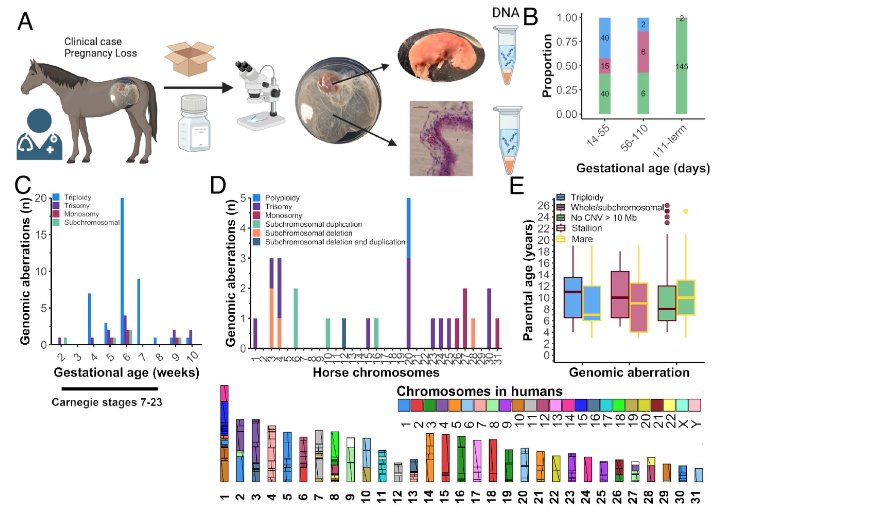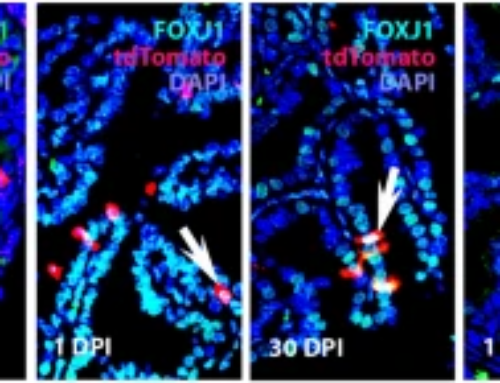
August 2024
Dr. Mandi de Mestre’s (Dorothy Havemeyer McConville Professor of Equine Medicine, Department of Biomedical Sciences, Baker Institute for Animal Health) laboratory published a research article in the Proceedings of the National Academy of Sciences (PNAS) this month. The work, co-led by Postdoc Shebl Salem and laboratory manager Don Miller, along with previous PhD student Jessica Lawson at the Royal Veterinary College, was reported in the article “Naturally occurring horse model of miscarriage reveals temporal relationship between chromosomal aberration type and point of lethality,” which found that 60% of all spontaneous abortions in the first two months of equine pregnancy resulted from complications that arose due to aneuploidy, an incorrect number of chromosomes. The most common chromosomal error was triploidy, a condition in which the fetus develops an additional set of chromosomes.
Equine pregnancy and human pregnancy share important parallels, as they have similar gestation periods (a horse has an 11-month gestation to a human’s nine) and embryonic development occurs at a similar rate in the early stages. Furthermore, as Dr. de Mestre explains, “triploidy had rarely been reported in mammals outside of women,” which, paired with the horse-human pregnancy parallels, makes horses an excellent model organism to study miscarriage at various (but especially early) stages of pregnancy, a subject that can be difficult to study in humans.
For more information about Dr. de Mestre and her colleagues’ findings, you can read their research article on PNAS, or check out the Cornell Chronicle profile on their article, “Horse miscarriages offer clues to causes of early human pregnancy loss.”
The image for this article, from Dr. de Mestre’s research article, demonstrates the high prevalence of triploidy and aneuploidy in equine POC. See her article in PNAS for more information. All credit for this image belongs to Dr. Mandi de Mestre and her co-authors.






